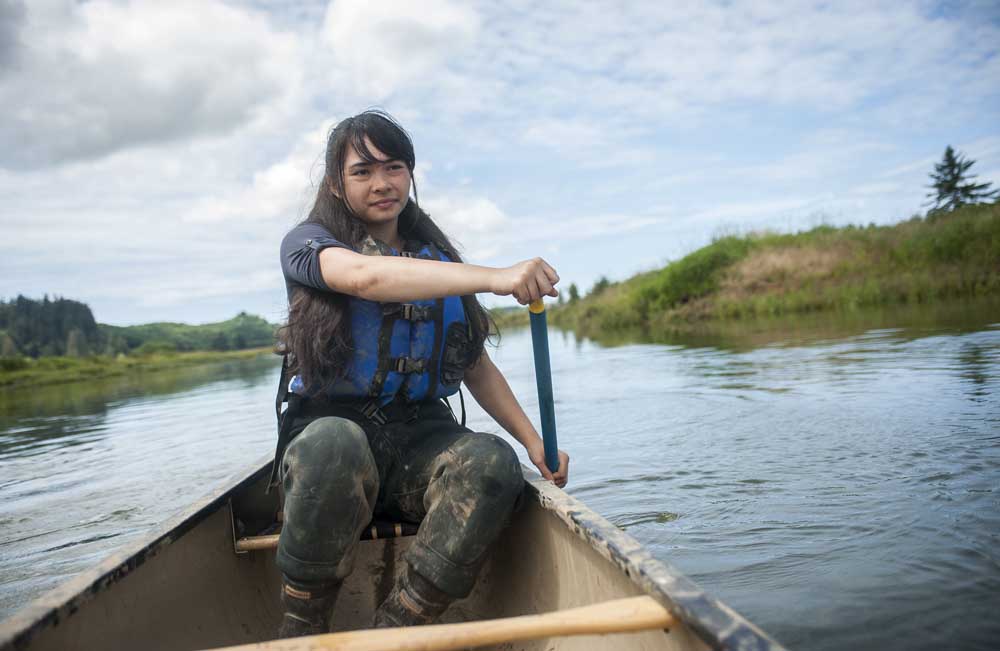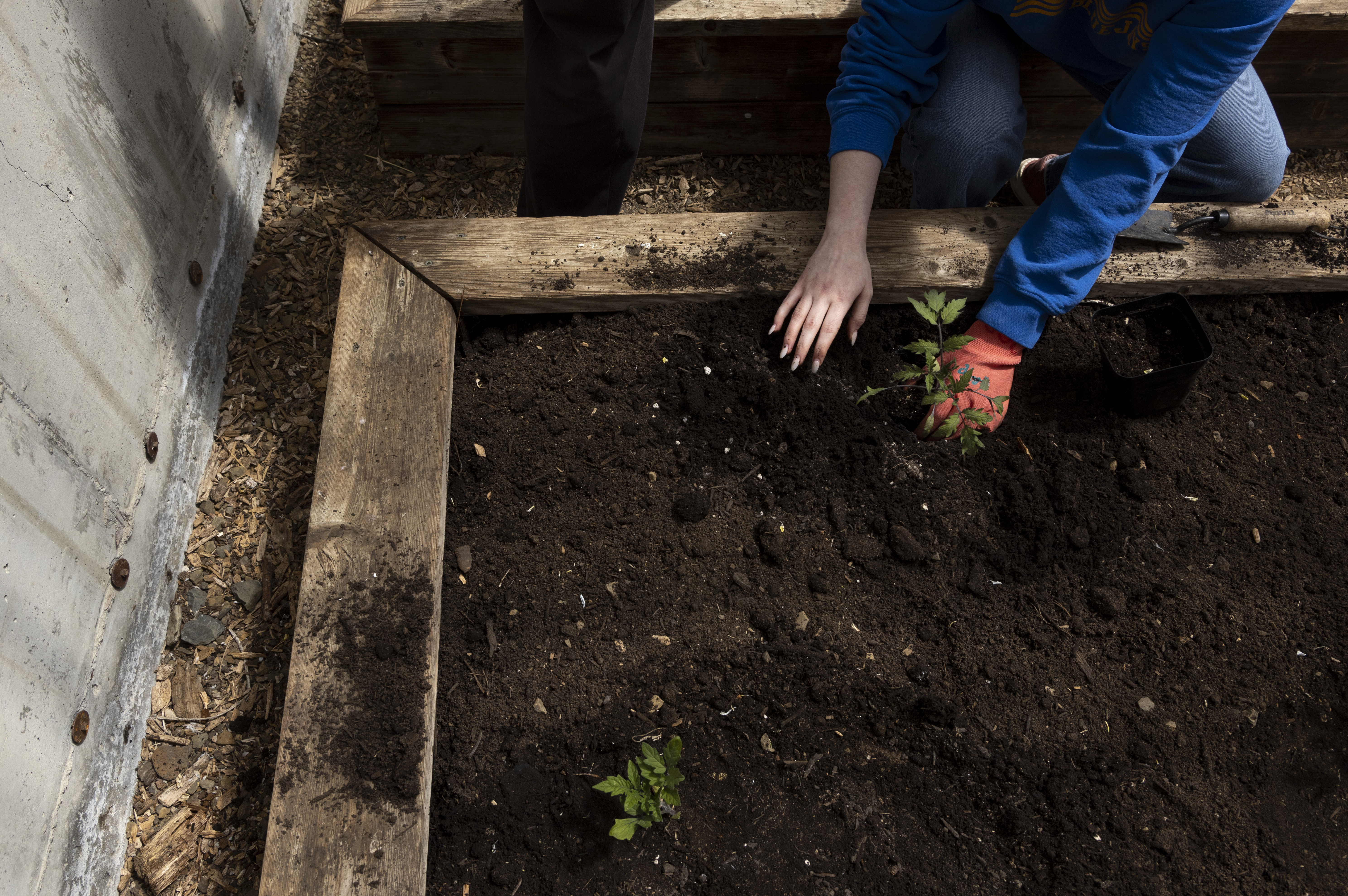Academy takes students into the wild
Published 5:28 am Tuesday, July 14, 2015

- Asia Lambert, a student with Upward Bound Summer Academy, paddles a canoe along the Klaskanine River.
Astoria High School seniors Pi Espinoza and Shoshanna McCleary paused along the water and listened quietly to the birdsong. For three minutes, they waited and surveyed. Then they walked back up the trail to the next site to do it all over again.
“Now it’s not just noise anymore,” McCleary said. “Now you know exactly what kind of bird it is.”
Espinoza and McCleary are part of Clatsop Community College’s Upward Bound Summer Academy. The program, funded by a $296,588 federal grant, prepares promising students from local high schools for higher education. As part of the program, the students get to choose an afternoon project to work on.
Espinoza and McCleary have spent their afternoons studying a restored wetland on the Klaskanine River, nearly 9 miles from Astoria. Espinoza is no stranger to the program. She attended last year and chose the mock United Nations project. She’s interested in law, spurred on by stories of injustice.
Monday, they surveyed birds while their classmates set out 2-liter soda bottles as tadpole traps at designated places in the wetlands, marking them with strips of flagging material. The traps are left out about 24 hours, and students pay particular attention to the Northern red-legged frog, Northern Pacific tree frog and American bullfrog, according to the protocol.
The project also studies pH, dissolved oxygen levels, temperature and turbidity in the wetland as measures of water quality.
At one of their first survey sites, Espinoza and McCleary spotted a bird in the trees behind them. The binoculars came up as they investigated its identity. The two students went back and forth, talking about color and beak length before deciding it was a downy woodpecker. The bird was not on the list of 20 species they are surveying, but they made note of it.
As part of their training, they spent time learning identifying characteristics of the birds they are studying, as well as birdsong and habitat.
There are eight sites where they survey birds, and some can be difficult to access. The water in the wetlands comes and goes, sometimes submerging the marshy ground and isolating spits of land where the students must go. And go they do. Students wore hip-waders or knee-high boots and paddled canoes to navigate the flooded areas.
Lee Cain, an Astoria High School biology teacher, leads the Upward Bound wetlands project.
“I don’t have to do much. Nature does the teaching,” he said.
The students will ultimately collect, analyze and interpret data from the wetlands. At the end of the program, they will present their results.
Even in the afternoon, the air teemed with bird calls — ornithologists usually survey in the morning when most birds are active, Cain said.
Cain is interested in exposing the students to the world of field biology. They study amphibians, birds, water quality, as well as any non-salmonid fish they incidentally encounter.
Teaching outdoors can open students up to the complexity of the natural world and their place in it as citizens and as part of the ecosystem, he said.
The natural world enveloped the students. Two spotted sandpipers swept through the grass over cloven-hoof impressions in the mud. A blue heron took wing as Espinoza and McCleary surveyed. And a spooked bullfrog, a non-native species to the area, croaked in surprise as it was disturbed.
The wetland is 50 acres of floodable land, but it wasn’t always that way. Sharnell Fee, the director of the Wildlife Center of the North Coast, bought the property for the center with the dream of breaching the dike to allow the area to return to its natural state.
“It took me 18 years to breach that dike,” she said. “It was one folly after another. But it happened, and we’re happy.”
Fee said bureaucracy slowed the process of breaching the nearly century-old dike along the Klaskanine River. Part of the hold up concerned neighboring property.
“You have to consider neighbors that you might flood,” she said.
So they built a cross levee to protect property.
And now, she has what she has wanted all along. The dike was breached in February, and since then, wildlife have flooded in with the river.
“It’s amazing how fast the wildlife discovered it,” Fee said.
The Wildlife Center recently released rehabilitated mallard ducks and a kingfisher into the wetland. The ducks still live there, using it as a way station before moving on, she said.
She has spoken with people who had trouble understanding she wants to leave the land alone, that she does not want to use it.
“I want it to be natural,” Fee said.
Cain’s Upward Bound project had surveyed the area before the breaches, collecting data. That data can be compared to what his students have collected this summer, a before-and-after illustration of restoration.
“His information that he’s gathering will be really valuable,” Fee said.
The Columbia River Estuary Study Taskforce will also study the area for the next five years to monitor water quality.
Upward Bound serves 71 high school students in the area. To qualify, students must meet criteria pertaining to need, including interest in higher education and academic ability, according to the college’s Upward Bound website.
Hands-on learning and rotating academic seminars make up the program. In the morning, students take classes on math, science, foreign language or writing. In the afternoons, they work on the projects. Besides the wetlands survey, the summer academy also includes projects on nutrition and cooking, wellness and theater.





